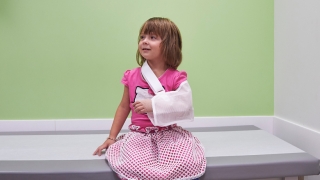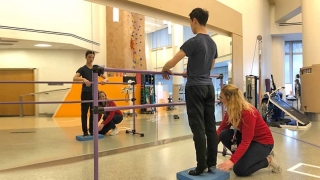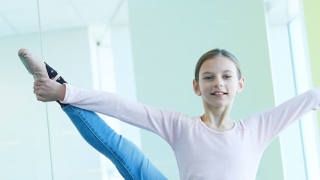Os Trigonum Syndrome in Children and Teens
What is os trigonum syndrome?
Os trigonum syndrome occurs when a small extra bone in the foot at the back of the ankle joint (the os trigonum) breaks away or becomes irritated.
An os trionum is the second most common accessory bone in the foot and is present in about 20% of the general population. In most cases, this extra bone goes unnoticed. It can, however, cause ankle pain when irritated or overused – as is the case for some performance athletes such as runners, ballet dancers and soccer players.
Os trigonum symptoms
Signs and symptoms of os trigonum syndrome may include:
- Deep, aching pain in the back of the ankle, occurring most often when walking, pushing off with the big toe, pointing the toes downward, or in certain dance positions such as tendu, releve’ en pointe and demi pointe
- Deceased range of motion in the foot/ankle (e.g., standing on toes or pointing toes)
- Tenderness in the back of the ankle when touched
- Swelling in the back of the ankle
- Clicking or catching sensation in the back of the ankle with big toes flexion
For ballet dancers, os trigonum syndrome is most noticeable when the affected athlete is not able to stand en pointe on the affected side (releve’ position). About one-third of all posterior ankle pain in classically trained ballet dancers results from os trigonum.
What causes os trigonum syndrome?
Os trigonum syndrome is caused when bone in the foot fails to solidify during adolescence. Bone ossification may be delayed or halted due to:
- An injury, such as an ankle sprain
- Repeated downward pointing of the toes (common about ballet dancers and some other athletes)
Sometimes os trigonum syndrome is referred to as a “nutcracker injury” because the tiny bone between the ankle and heel is crunched when the ankle goes into downward flexion and the tissue connecting the os trigonum to the ankle is stretched or torn, causing inflammation.
Diagnosing os trigonum syndrome
If os trigonum syndrome is suspected, it will be clinically evaluated and confirmed with imaging tests. At Children’s Hospital of Philadelphia (CHOP), a sports medicine specialist or orthopaedic physician will examine your child’s medical history, evaluate their symptoms and perform a physical examination.
In most cases, imaging tests will be ordered to confirm the diagnosis and support treatment decisions. An X-ray of the foot and ankle provides full visibility of bones and joints, while additional imaging, such as an MRI scan, may be ordered to provide additional details needed for treatment.
How is os trigonum treated?
Treatment for os trigonum syndrome typically includes:
- A period of rest from strenuous activity to allow inflammation to subside
- Avoiding and/or limiting certain movements that cause pain
- Immobilization, using a controlled ankle motion walking boot (CAM boot), an orthopaedic device to limit foot and ankle motion
- Ice to decrease swelling
- Over-the-counter medicines – such as ibuprofen or naproxen to reduce inflammation and treat minor pain
- Ultrasound-guided injections of corticosteroids (anti-inflammatory medication) into the back of the ankle between the os trigonum and the talus to offer pain relief and increase the patient’s range of motion
In rare cases, surgery may be recommended to remove the os trigonum. This additional bone is not necessary for normal foot function. Recovery from os trigonum surgery is typically 3-4 months and typically recommended only after non-surgical interventions have failed.
Outlook for young athletes with os trigonum
The outlook for youth with os trigonum syndrome is positive and the condition does not cause long-term damage. While most can be helped with nonsurgical interventions, some will require surgery.
To ensure optimal outcomes for children and teens with os trigonum syndrome, families should seek sports medicine or orthopaedic specialists who have the knowledge and expertise to provide whatever treatment is necessary for the youth to return to the activities they enjoy.




